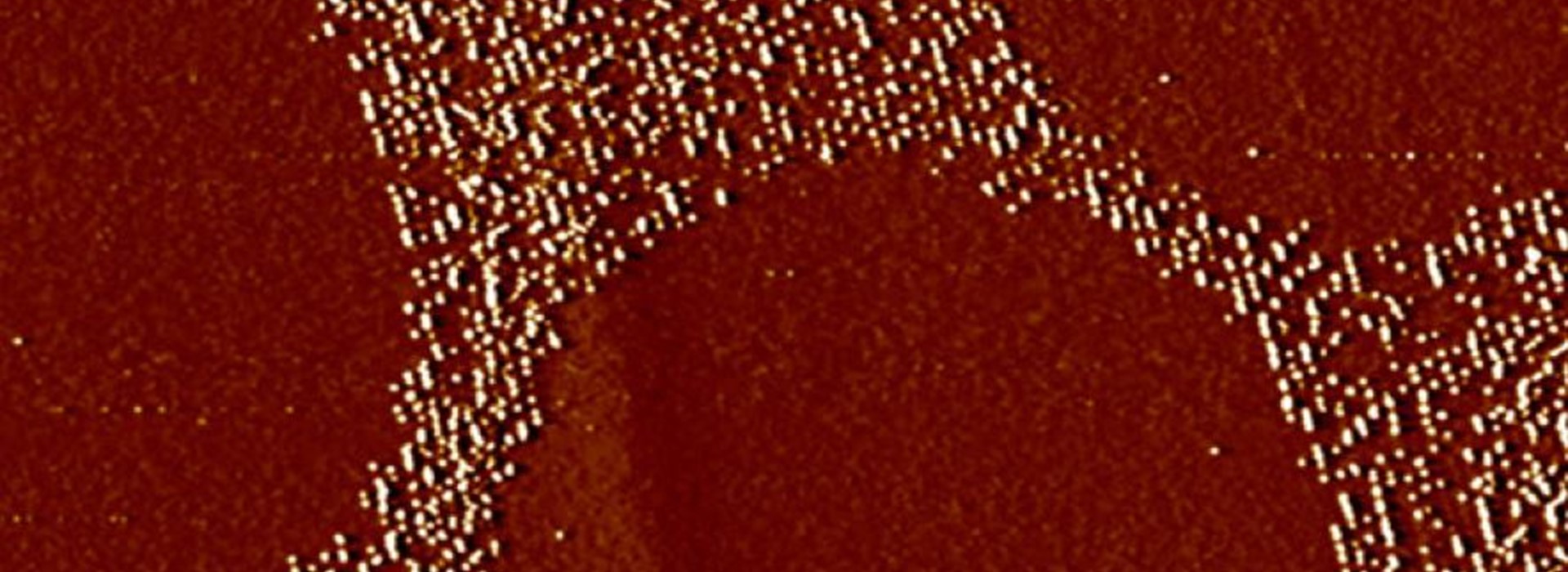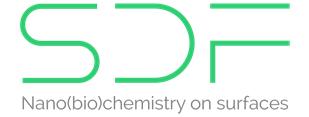Nanoscale Chemical Patterning of Graphite at Different Length Scales

Chemical patterning surfaces is relevant in several different domains of science and technology with exciting possibilities in electronics, catalysis, sensing, and photonics. Here, we present a novel strategy for chemical patterning of graphite using a combination of covalent and non-covalent approaches. Building on our previous work, where self-assembled monolayers of linear alkanes were used as sacrificial masks for directing the covalent anchoring of aryl groups to the graphite surface in sub-10 nm arrays, we present a modified design of a template alkane with alkoxy terminal groups which allowed better pattern transfer fidelity in comparison to simple linear alkanes. We also explored the use of chronoamperometry (CA) instead of previously used cyclic voltammetry (CV) for the functionalization process, which enabled patterning of the graphite surface at two-different length scales: few hundred nanometer circular patterns interspersed with sub-10 nm linear arrays. The covalent chemical patterning process has been studied in detail using CV and CA measurements whereas the patterned substrates have been thoroughly characterized using Raman spectroscopy, scanning tunnelling microscopy (STM) and atomic force microscopy (AFM). Based on the comparison between the pattern transfer fidelity of previously studied alkanes and newly synthesized alkoxy alkane, we discuss plausible molecular mechanism of pattern transfer.
Read more: Nanoscale, 2023, 15, 10295-10305 Link to publisher
To enable comments sign up for a Disqus account and enter your Disqus shortname in the Articulate node settings.


